The Lost Catalogue
Many Ruskin pottery collectors are familiar with the two catalogues produced by the pottery.
The 1905 catalogue issued after the success achieved by the pottery at the 1904 St. Louis exhibition illustrated the 255 shapes that were in production along with the sizes and price codes. In 1906 this was extended to 326 shapes and in 1909 it reached 353 shapes.
The 1913 catalogue was formed after the death of E. R. Taylor in 1912 and the issue noted that William Howson Taylor was now the sole proprietor of the Ruskin Pottery. The catalogue illustrated a selection of one hundred pieces now available from shapes which now numbered 440, with sizes and price codes.
Both of these catalogues could be bought for one shilling but the price was returned on orders of one pound and upwards.
In the early years the pottery concentrated on the manufacture of tiles for the buildings that were being erected around Birmingham. Ceramic wall tiles and tiles for fireplaces were in demand and the pottery branched out to offer door knobs, door plates, ring pulls, light switches and roundels for mounting in furniture and metalwork. These were made from the local ‘Tocky’ clay which when fired had a light brown colour with the black speckling of impurities. Although this was the production of the first year or two, very little has survived today.
A pamphlet was produced in 1900 promoting a line of artistic vases. Headed ‘Forms in Pottery’ and of only four pages printed in black, it was the first catalogue of the series.
The pamphlet was targeted at the art and technical schools of the day and was in response to a need recognised by Edward R. Taylor who was headmaster of the Birmingham School of Art. Twenty-two vases and bowls are illustrated and numbered together with some small items lettered from A – G. These pots sometimes carry the appropriate number impressed, about 2mm in size, with marks which include ‘Taylor’ or the Taylor monogram impressed and/or a scissor mark painted.
Some, but not all examples used the ‘Tocky’ clay which was sourced locally. Light brown in colour when fired and containing impurities, it was satisfactory for the tiles, roundels, door plates as the items were flat but it may have given problems with the vases and bowls. By late 1901 this clay body was replaced by a porcelaineous stoneware which was supplied by Wengers, a Staffordshire company. It was described as a mixture of ball clay, china clay stone and calcined flint suitable for firing at high temperature.
Tocky clay should not be confused with a dark brown firing clay used in 1905 and again in 1914-18 which was bought when a supply of the white firing clay was not available.
This list below shows those numbered and unnumbered pieces which have been found of the Forms in Pottery catalogue shapes. 4, 5, 6, 8, 9, 20, 21, 22, A, B, F.
Most pieces prior to 1905 do not carry a shape number having only one or more of the Taylor marks. Some exhibit painted numbers usually with a letter, these being A, K, M, W or Y. These are colour, production or experiment marks. Only two pieces with impressed numbers are known in more than one example and can therefore be considered with a degree of certainty to be shape numbers; No. 50 – A small Bowl with a flat rim and No. 101 – a Vase, 8 inches. No 50 was not carried into the 1905 catalogue and the vase was renumbered to No. 87 in a range of sizes from 4 to 12 inches. A table detailing the known impressed numbered pots is below.
| ‘Forms in Pottery’ known numbers | Description |
| 1 to 22 | Illustrated in ‘Forms in Pottery’ |
| A to G | Smaller forms illustrated in ‘Forms in Pottery’ |
| 28 | Pepper pot |
| 38 | Honey pot |
| 50 | Small bowl with flat rim |
| 60 | Patent ink pot |
| 62 | Tea Pot |
| 89 | Cup |
| 101 | Vase |
| 110 | Pepper pot |
| 117 | Vase |
| 120 | Plate |
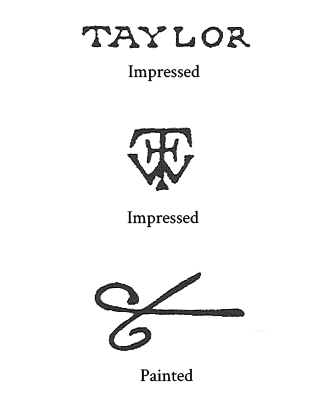
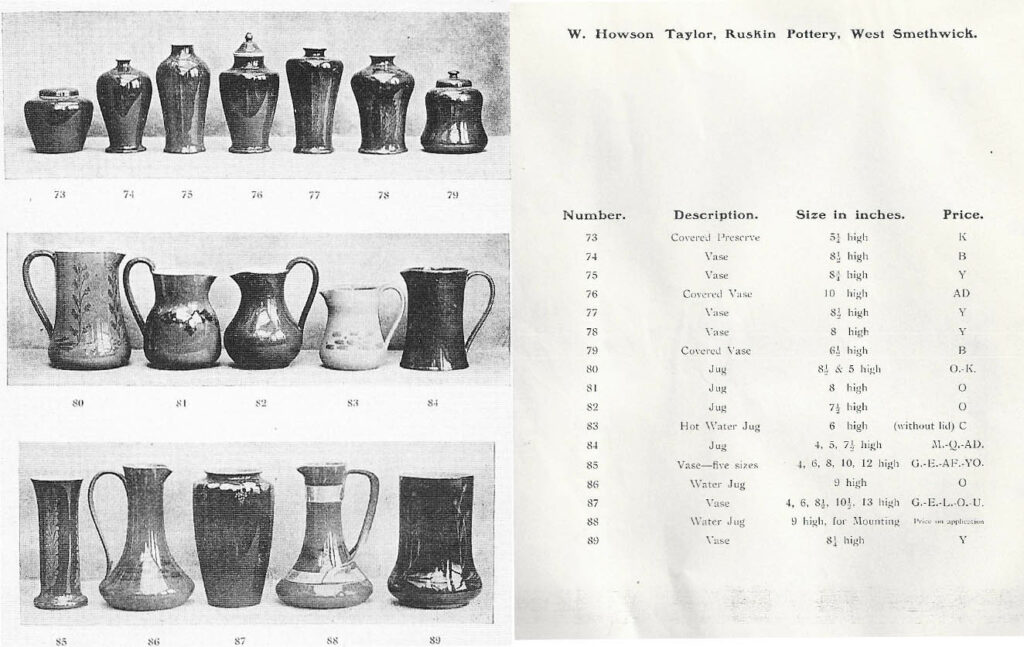
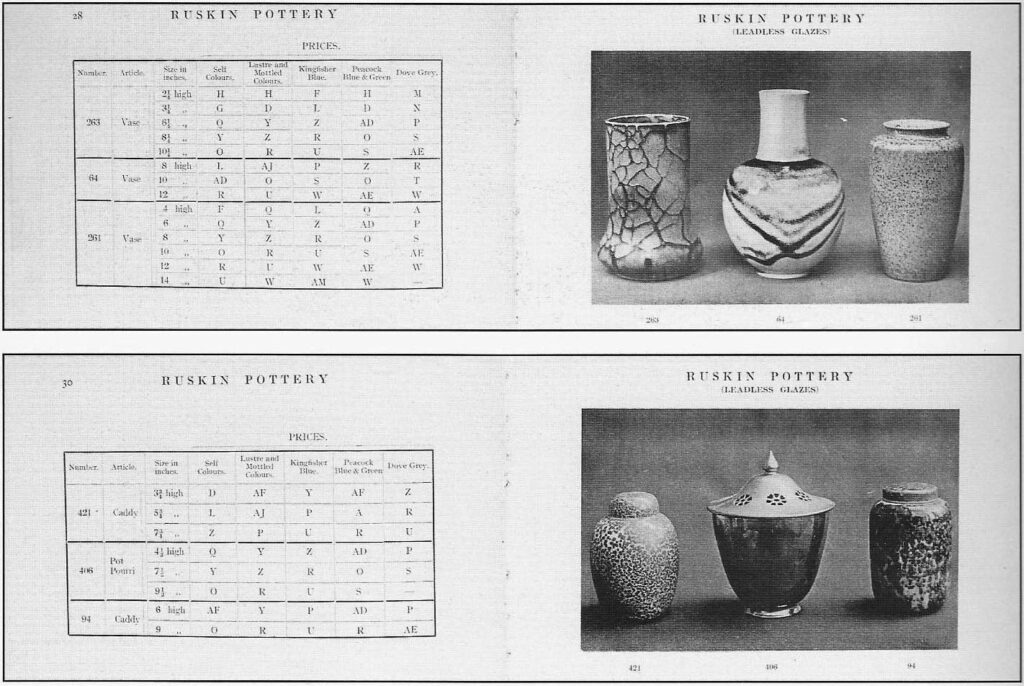
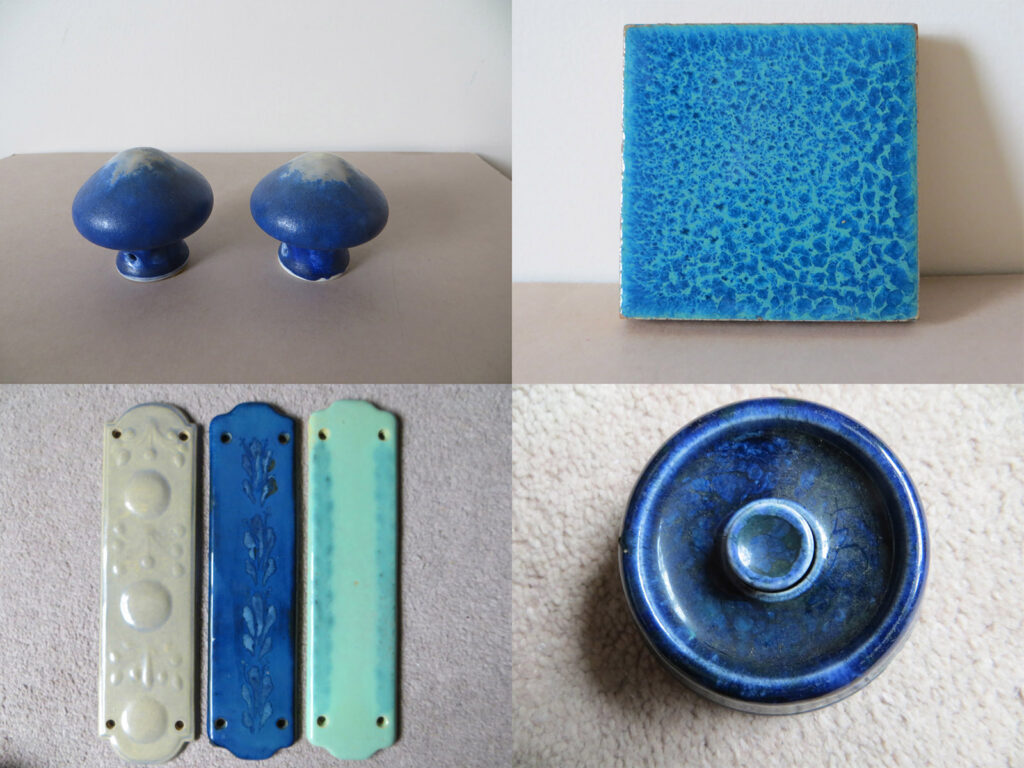
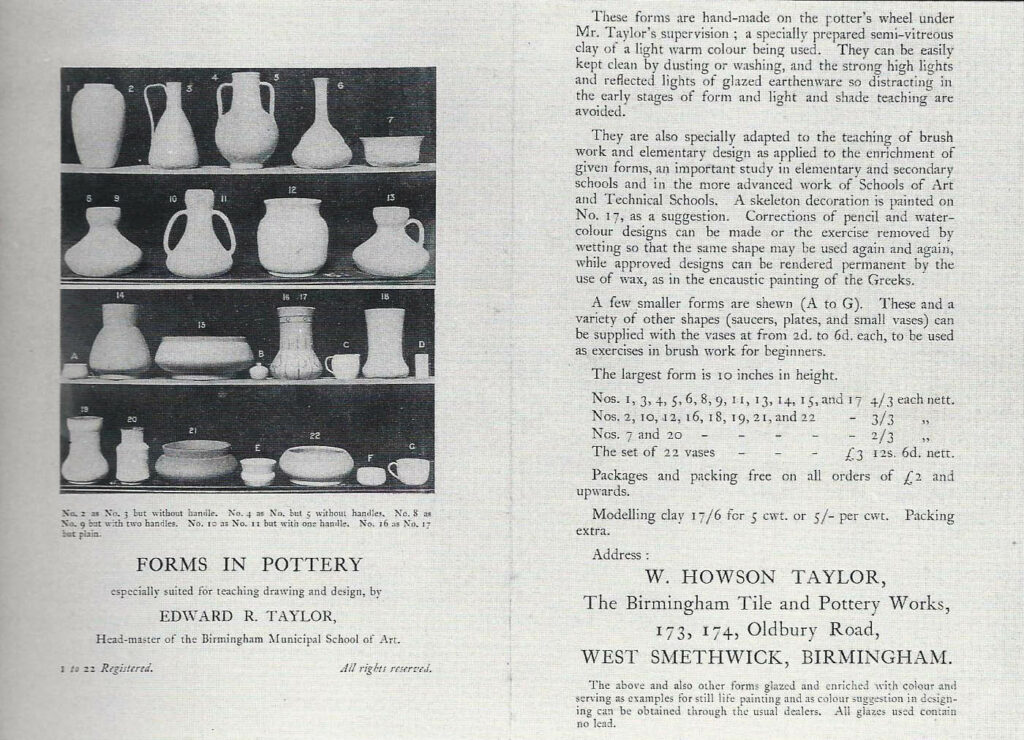
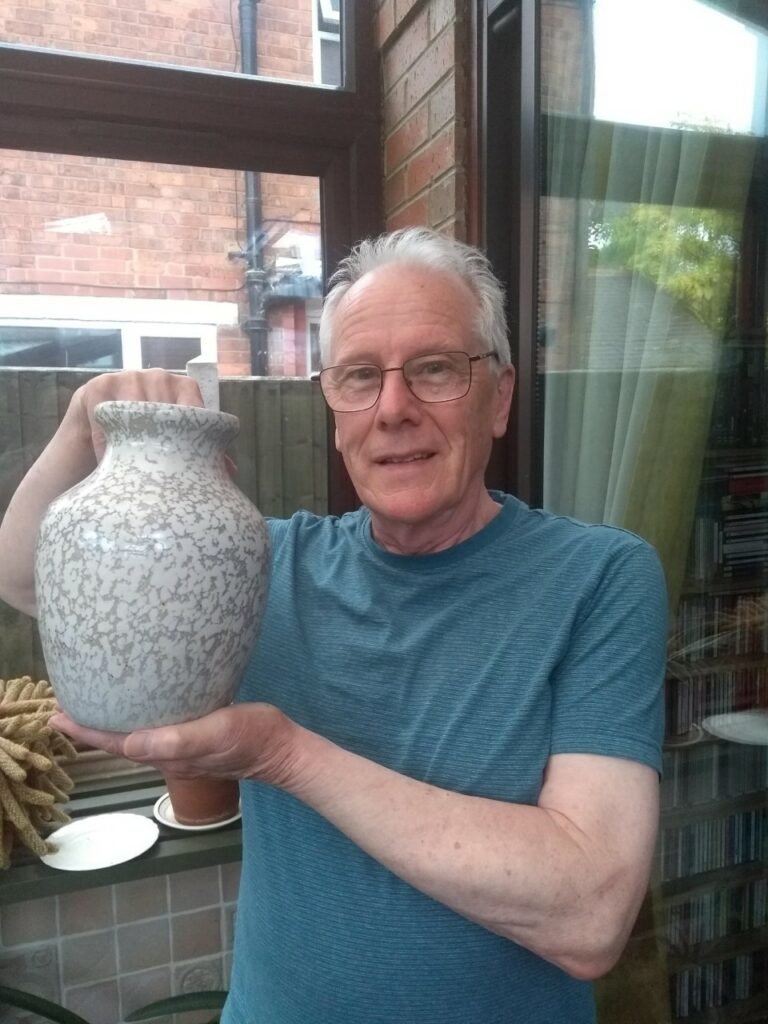
Hi there. I have a green mauve small pot/ vase with trailing vine around. It has scissors on the base and 05. I am trying to work out if this may be Ruskin. Thank you
Thanks for the image Tiffany , lovely find 100% Ruskin ,shape 34 in the factory catalogue,well done
Hi John
I have something very very unusual I wish to show you, i can’t find where to email you.
Our family did live in Smethwick,
Hi Blue,thanks for contacting me and sending me the images, you have a very rare item made by the Ruskin pottery
Hi, I have a Ruskin bowl which I cannot find the shape for and wondering if you would be able to tell me the shape number. Please could you email me so that I can send through some images? Thanks!